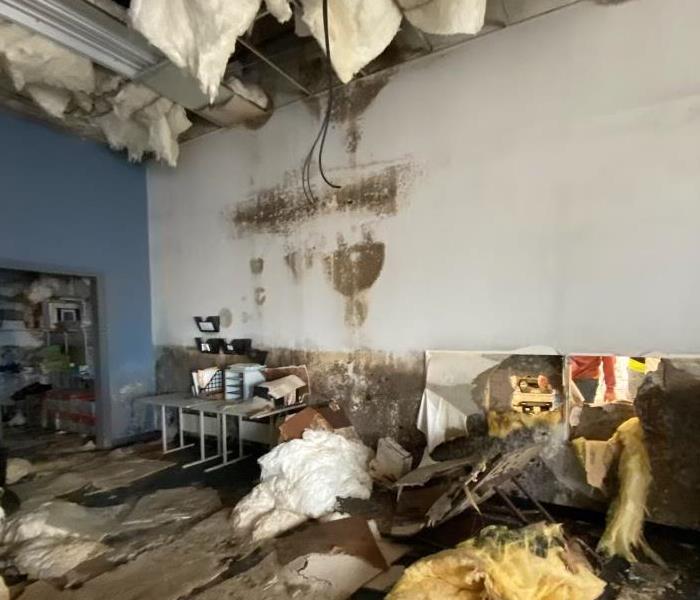Spotting Black Mold: 3 Warning Signs and Effective Removal Methods
3/14/2024 (Permalink)
Black mold, scientifically known as Stachybotrys chartarum, is a type of mold that can compromise indoor air quality and cause extensive damage to your property. Recognizing the signs of black mold early is crucial for swift and effective remediation. In this blog, we'll explore three key warning signs of black mold and share practical steps on how to get rid of it.
Signs of Black Mold
Distinctive Appearance:
Black mold often appears greenish-black and has a slimy or powdery texture. While its name suggests a specific color, it can also manifest in dark green or gray hues. It tends to grow in clusters and may spread quickly if left unchecked.
Musty Odor:
Black mold produces a distinct musty odor that can permeate indoor spaces. If you notice an unpleasant, earthy smell, particularly in areas prone to dampness or water damage, it could be an indicator of black mold presence.
Visual Clues:
Inspect surfaces for visual clues such as dark stains, discoloration, or mold growth. Check hidden and less frequently visited areas, as black mold often thrives in damp and poorly ventilated spaces.
How to Get Rid of Black Mold
1. Identify and Address Water Source:
Black mold thrives in damp environments, so the first step is to identify and address any water sources contributing to the mold growth. Fix leaks, repair water-damaged areas, and ensure proper ventilation to reduce moisture levels.
2. Protective Gear and Ventilation:
Before starting the cleaning process, equip yourself with protective gear, including a mask, gloves, and goggles. Open windows and doors to enhance ventilation during the cleaning process.
3. Clean with Mold-Killing Solutions:
Use mold-killing solutions such as commercial mold removers to clean affected surfaces. Scrub the mold off hard surfaces and remove porous materials like drywall or insulation if extensively contaminated.
4. Thorough Drying:
After cleaning, ensure thorough drying of the affected areas. Dehumidifiers and fans can help accelerate the drying process, reducing the likelihood of future mold growth.
5. Regular Inspections:
Regularly inspect your home for signs of moisture and promptly address any water-related issues. Conduct routine checks in areas prone to dampness, such as basements, bathrooms, and attics.
Professional Assistance
While tackling small-scale black mold issues may be feasible for homeowners, larger infestations or widespread contamination may require professional intervention. SERVPRO® experts have the knowledge, experience, and specialized equipment to assess, remediate, and ensure the complete removal of black mold.
In conclusion, early detection and proactive measures are key to addressing black mold. By staying vigilant and implementing effective cleaning methods, you can create a better living environment for you and your loved ones.

 24/7 Emergency Service
24/7 Emergency Service
